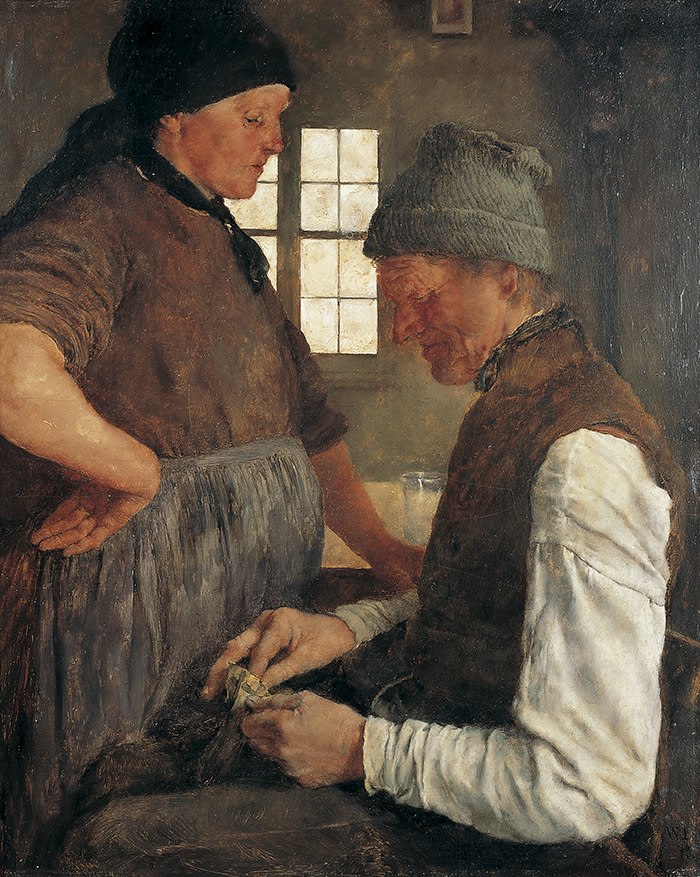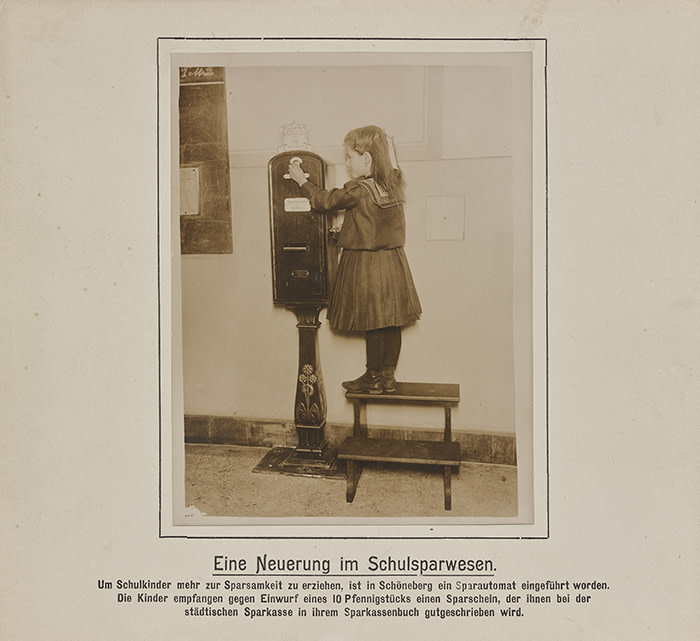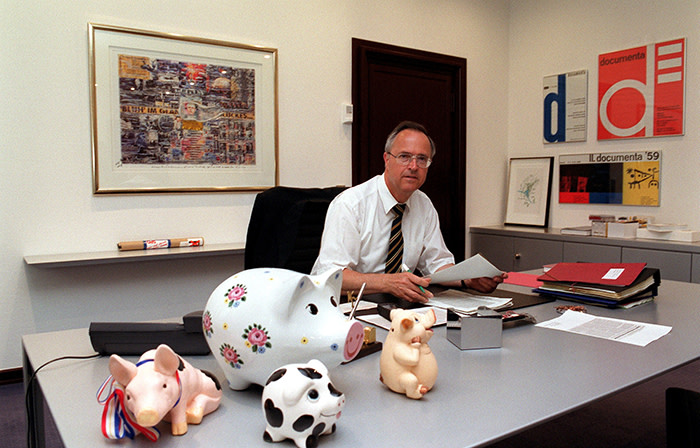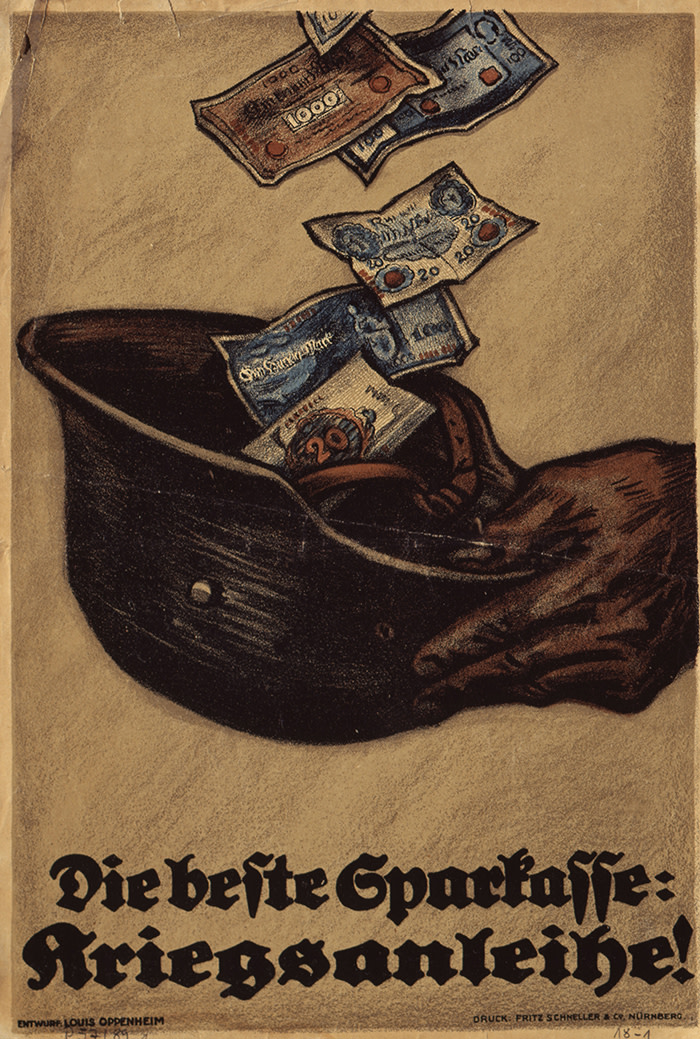Why are Germans so obsessed with saving money?
Simply sign up to the German economy myFT Digest -- delivered directly to your inbox.

Below a Berlin street, behind a succession of thick steel doors, lies a storage room the size of a basketball court. Here, at the German Historical Museum, is a bewildering selection of treasure: Soviet-era busts and sculptures, a black iron trolley from the 1920s, a wooden box marked with the beguiling inscription “Napoleon’s hat”.
Every object here could tell a fascinating story, but what I’ve come to see I hope will tell me something about a German obsession. Robert Muschalla, a curator at the museum, walks me to a metal shelf at the back of the room stuffed with piggy banks and money boxes. The oldest is almost 400 years old but most date from the late 19th and early 20th centuries. As Muschalla, a 43-year-old economic historian, lifts them up with white-gloved hands, I notice how many of them are decorated with images of a beehive, that ancient symbol of order and prudence. Another thing jumps out: most of these everyday objects are engraved with rhymes and epigrams that point to a purpose far beyond the humble collection of coins and notes. “The fate of the nation rests only in our own strength [Nur in der eigenen Kraft ruht das Schicksal der Nation],” declares one. “Add to the wealth of the German people [Vermehre den Reichtum des deutschen Volkes],” says another.
I have come to the museum to answer a question that has vexed me, and much of the world, for many years: why is saving so important to Germans? It is a question that has exasperated policymakers in Washington and traumatised pensioners in Athens. During the years of the eurozone crisis, complaints over German austerity and German surpluses became commonplace. Governments across southern Europe were forced to impose harsh budget cuts in a frantic bid to bring their wayward deficits into line, and fend off the hounds of the global bond market. The economic picture was as dire as it was complex, but on the street the finger of blame often simply pointed north: to those tight-fisted Germans and their cruel obsession with fiscal discipline and budget austerity.
Most Germans would reject that accusation, but the notion that austerity — whether in private or in government — is something specifically German is widely shared here as well. It is a country that takes pride in the solidity of its public finances, in balanced budgets and high savings rates, in the fact that society as a whole knows how to delay gratification, tighten its belt and wait for jam tomorrow. More often than not, the habit is acquired young. Growing up in Germany, I opened my first savings account when I was eight, and still remember the dog-eared little blue booklet tracking my modest riches. I also remember the countless proverbs and rhymes, urging me to “honour the Pfennig” and to “save in time”.

Austerity is an integral part of the image that Germans have of themselves — and a characteristic they feel sets them apart from other nations. There is also a deeply ingrained conviction that saving money and avoiding debt is not just a prudent approach to managing your income but a sign of something deeper: “Saving is seen as the morally right thing to do. It is more than a simple financial strategy,” says Kai Uwe Peter, the managing director of the Berliner Sparkasse, a savings bank that boasts some 2m clients in the capital.
How it came to be like this is the theme of a new exhibition at the German Historical Museum that opens this weekend (and which will include the pieces I am looking at in the storage room). It is called Saving — History of a German Virtue, and brings together a wealth of objects, paintings, posters and documents that trace the history of saving in Germany from the late Enlightenment to the eurozone crisis. “We want to examine how saving became something that was seen — above all in Germany itself — as something specifically German,” Muschalla says.
German households save about 10 per cent of their disposable income, twice as much as the average EU or American. (In the UK, the savings rate was actually negative in 2016.) What’s more, the German savings rate is remarkably stable over time, unaffected by economic crises and interest rate changes. Home ownership, by contrast, is low by international standards. That helps explain why Germans tend to look at economic events exclusively from the perspective of the saver: when the European Central Bank keeps interest rates low, the tabloid press howls that Germany’s savers are being robbed. What low interest rates mean for home buyers, borrowers, investors, companies and the wider economy seems almost an afterthought.
According to Harold James, the economic historian and Princeton professor, the German commitment to saving reflects demographic, historical and even psychological currents: “The Germans are much more worried than the Americans, for example. They think they need to prepare for every eventuality, that bad things can hit them and that they need to be ready for that,” he says. James is also convinced that religion plays a role: “There is a Protestant tradition of saving and restraint. Virtuous behaviour means renunciation of present satisfaction.”
The Berlin exhibition makes the case that Germans’ commitment to saving goes even deeper than private morality. Far from being a purely individual pursuit, saving is seen as an activity that serves a collective — and, indeed, national — purpose. It is a link that is made explicit on the back of that money box in the Berlin vault: the fate of the nation rests only in our strength — our strength and willingness to keep on dropping coins into metal boxes.
The world’s first savings bank was founded in Hamburg in 1778. Inspired by Enlightenment ideas of social progress, the institution was seen initially as a tool to help the plight of the urban poor. By saving small bits of their pitiful earnings, they might one day be in a position to pay for the education of their children, and to soften the financial blow of old age and illness. That motivation, however, would soon be replaced by something altogether different.
“In the second half of the 19th century, saving becomes increasingly linked to the national idea,” Muschalla explains. “That is when you see the rise of a savings movement that calls on schools to teach saving to children and that introduces special school savings banks. This is also when you see an explosion in saving accounts all over Germany. At this point, saving is no longer a tool for fighting poverty. Saving starts to be seen as a service to the nation.”
The numbers are striking: in 1850, there were a mere 278,000 savings accounts in the entire kingdom of Prussia. By 1875, their number had soared to 2.21m. Another 25 years later, and Prussia boasted more than 8.67m savings accounts. At least a quarter of the population were officially savers. The surge reflected in part the country’s rising prosperity. But it was also the product of a deliberate strategy to avoid social conflict and keep the forces of socialism at bay. The savings deposit was seen as “a dam against communist temptations and revolutionary thought, which can arise in those who have nothing to lose”, according to an 1865 account cited in the exhibition.
The surge coincided, of course, with the final stages in Germany’s long struggle to overcome its own political divisions, culminating in the Prussian-led unification of 1871. Germany became a nation of savers at the same time as it became a nation. The two developments were linked, moreover, in a very tangible sense: the new Sparkassen, or local savings banks, hoovered up private savings, and made them available to municipalities to fund canals and roads, electricity and gas works, as well as schools, theatres and public parks. The new Germany was built, at least in part, on the back of the deposits piling up in a fast-growing network of Sparkassen branches across the country.

The notion of personal savings as a “service to the nation” became more explicit still during the first world war, when Germans were encouraged by way of a massive propaganda operation to invest their savings in war bonds. A poster from 1917 shows multicoloured banknotes dropping into a soldier’s steel helmet. The slogan reads simply: “The best savings bank: war bonds!”
Germans followed the call in their millions, only to see their holdings eroded, and eventually wiped out, by galloping inflation. This process would reach its apotheosis in the notorious 1923 hyperinflation — the ultimate trauma of the German saver, and one that seems to haunt the nation even a century later. “There is a mythical memory of Weimar as the moment in German history where — as a result of hyperinflation — the German saver and German society were plunged into crisis. That is an image that lives on even though it is, to say the least, controversial,” says Raphael Gross, president of the German Historical Museum. The economic event that helped sink Weimar was the 1929 depression, he argues, not the hyperinflation of 1923.
The German city of Kassel lies a three-hour train journey west from Berlin, in the prosperous federal state of Hesse. It is best known as the venue for the Documenta, a provocative contemporary arts festival held every five years. The man I have come to see embodies a more sober local tradition. Hans Eichel, 76, is something of an archetype of the German finance minister — frugal, disciplined, uncompromising. It is a job, he tells me, that requires only a very small vocabulary: “You mainly just have to say no.” The veteran Social Democrat held the post from 1999 to 2005, and is still best remembered for his nickname: the Sparkommissar, the savings commissar.
He earned the title shortly after coming into office, when — confronted with a gaping budget deficit — he decided to slash spending by some €15bn in one fell swoop. Over coffee in his luminous apartment overlooking an old people’s home, Eichel tells me that he cut every single budget position that was moveable by 7.5 per cent. Bild, the tabloid, hailed his exploits with the admiring headline: “Er rasiert uns alle!” — he shaves us all!
The surprising thing was not so much that he pushed through a mammoth austerity package, but that voters loved him for it. “There were some complaints and demonstrations, but it was popular,” Eichel recalls with a smile. “It was so popular that in the next election campaign I was invited everywhere to speak at rallies. I just went and explained fiscal policy to people. It was easy.”
The episode set a template for future office-holders: German finance ministers earn the admiration and support of voters not by promising tax cuts and spending increases, but by proving their commitment to fiscal discipline. (The holy grail for German finance ministers is the Schwarze Null — literally the “black zero” — meaning a balanced budget or small surplus. Wolfgang Schäuble, the man who delivered the first Schwarze Null in decades, was loathed across much of southern Europe. In Germany, he left office last year as the most popular member of the government.)
Eichel decided to make the most of his reputation. When an admiring voter approached him with a piggy bank as a gift, the minister displayed it on his desk. This, too, went down well with Germans, who started sending him piggy banks from across the country. He even received a bright red specimen from a visiting Chinese delegation.

Looking back, Eichel wonders whether he might have overdone it. He is critical of Germany’s stance during the eurozone crisis, defends the policies championed by ECB president Mario Draghi, and believes that his successors in the finance ministry have under-invested. “There is no point in having a debt-free state,” he tells me. “If you save money by avoiding necessary investment, for example in education, you are also leaving debts to the future generation.”
If Eichel embodies the thoughtful approach to Teutonic austerity, the exhibition in Berlin has plenty of items that illustrate the dark excesses of Germany’s savings culture. One is a political campaign flyer from 1930 denouncing the “robbery of the German saver”. It attacks the economic and fiscal policies of Weimar Germany, and is quick to point the finger of blame at “the Jew, the speculator, banks and financial capital” who have “triumphed over German labour”. The solution is presented on the reverse page: “That is why you have to come to Adolf Hitler. Vote List 9.”
Three years later, Hitler and the Nazis would be in power, and test the idea of saving as a service to the nation to the limits and beyond. For the Nazis, saving was the authentic Germanic way of dealing with money. “The saver was seen as hard-working and virtuous, as a person who follows the correct path. At the opposite end of the spectrum was the person who is active in the stock market, the speculator, the gambler,” says Gross.
Where saving was once seen as a bulwark against revolution and a way to finance Germany’s industrial rise, it was now twisted into the service of the regime’s anti-Semitic ideology, and into a tool to ready the nation for war. As explained in the exhibition, special school savings banks, which first surfaced in the late 19th century, became ubiquitous: by 1938, more than a third of all school children were saving money through these institutions, equivalent to 3.5m individual accounts. They were encouraged through intense propaganda, including the blunt appeal: “Your saving helps the Führer!”
Down in the storage room, Muschalla shows me a Nazi-era piggy bank issued by the Berliner Sparkasse that sums up the “triad” of values espoused by the regime. There are three images: one shows workers bashing metal with smokestacks in the background, another shows a Wehrmacht soldier standing guard in front of the Brandenburg Gate, the third depicts a family putting coins into a savings box. Each is set above a single word: Work. Order. Saving.
Despite the unprecedented death and destruction around them, Germans kept on saving until the bitter end. By September 1944, the last date for which statistics are available, German savers had hoarded 97bn Reichsmark, 68bn more than at the start of the war, and seven times more than at the time when Hitler came to power.

However, just like in the aftermath of the first world war, those savings would be wiped out almost entirely by inflation, followed by the currency reform and the introduction of the Deutschemark. And, as before, the experience would not discourage Germans from saving once again. On the contrary: between 1950 and 1960, savings deposits increased tenfold. It seems paradoxical. But for Muschalla, the fact that German savers twice lost their savings, and twice started saving again right away, holds an important message: “This shows that saving was never only an economic strategy. It was something habitual.”
That remains true today. Germans continue to save, and they continue to fret that their savings might be hurt — by inflation, by low interest rates, by the murky machinations of European central bankers and politicians. They continue to regard stock markets with disdain, and still put their faith in the good old-fashioned Sparkasse. German savings banks continue to control 37 per cent of all deposits.
German children are no longer subjected to the kind of overt propaganda that was the hallmark of earlier periods. But when my six-year-old returned from his first day at a Berlin junior school, he was clutching a bright red folder from the local Sparkasse filled with play money. German savings banks are legally mandated to encourage and promote saving, and they waste no time in doing so, with the support of local school authorities.
How all this plays into German politics today is not easy to say. Officials in Berlin had a hundred reasons to defend their stance during the eurozone crisis, and they will have a hundred more in the debates yet to come, including on the controversial call to establish a pan-European insurance for savings deposits. They will speak of moral hazard and free riders, of bad loan ratios and the need to enhance competitiveness. But as you run your finger down the long list of exhibits on show in Berlin — all those appeals and pamphlets, those rust-stained money boxes and faded posters — it is clear the roots of German austerity go very deep indeed. Persuading a government to change its fiscal policy is hard enough. Convincing a nation to abandon its idea of virtue is harder still.
Tobias Buck is the FT’s Berlin correspondent
Follow @FTLifeArts on Twitter to find out about our latest stories first. Subscribe to FT Life on YouTube for the latest FT Weekend videos
Letter in response to this letter:
Shouldn’t we encourage the propensity to save? / From Dr Frank Boll, Rotselaar, Belgium
Comments